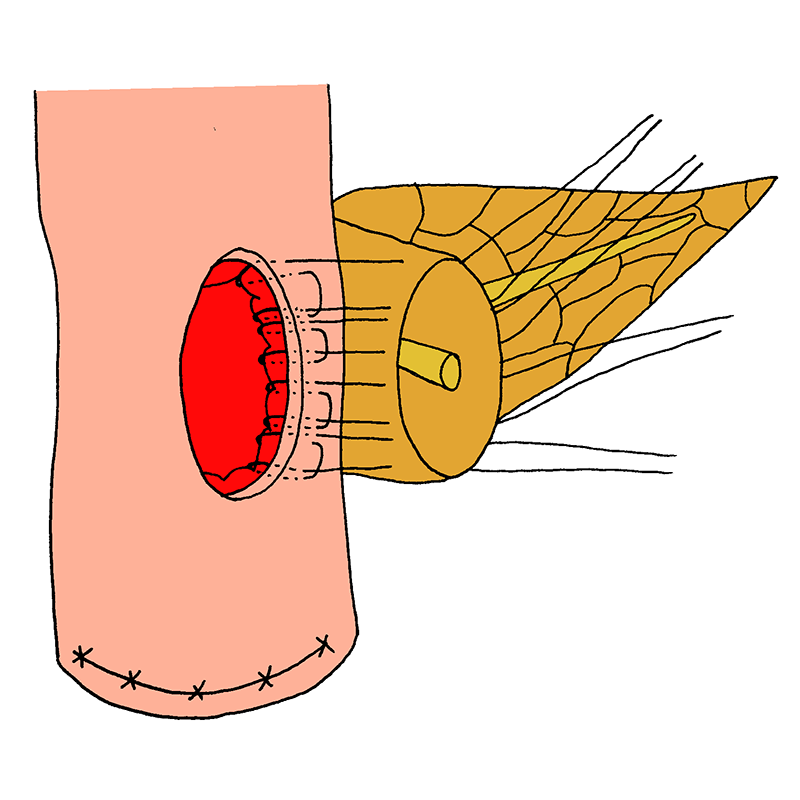The jejunal sidewall is opened for a size similar to the diameter of the pancreatic stump. A total of five to six U-sutures are applied following an inverted mattress suturing technique. The first three to four sutures go through the full-thickness of the posterior jejunal wall, from outside to inside, and through the seromuscular wall of the jejunum back to outside, inverting the seromuscular coat of the jejunum.
One-layered invagination pancreatojejunostomy using inverted mattress sutures
- The jejunal sidewall is opened for a size similar to the diameter of the pancreatic stump.
- A total of five to six U-sutures are applied following an inverted mattress suturing technique. The first three to four sutures go through the full-thickness of the posterior jejunal wall, from outside to inside, and through the seromuscular wall of the jejunum back to outside, inverting the seromuscular coat of the jejunum.
- The sutures are placed straight through the pancreatic stump, from posterior to anterior, penetrating the full-thickness of the pancreas.
- For inversion of the anterior seromuscular jejunal wall, the sutures are placed from outside to inside through the seromuscular layer of the jejunum and back to outside through the full-thickness of the anterior jejunal wall.
- On both the superior and inferior corners of the anastomosis, an extra U-suture is placed in a similar manner, fixing respectively the superior and inferior ends of the pancreas.
- All sutures are tied gently, causing invagination of the pancreatic remnant into the jejunum.
- Kwon HJ, Ha HT, Choi YY, Kim SG. The effects of the end-to-side inverted mattress pancreaticojejunostomy on postoperative pancreatic fistula: a single surgeon’s experience. Ann Surg Treat Res. 2015;89:61-67.






